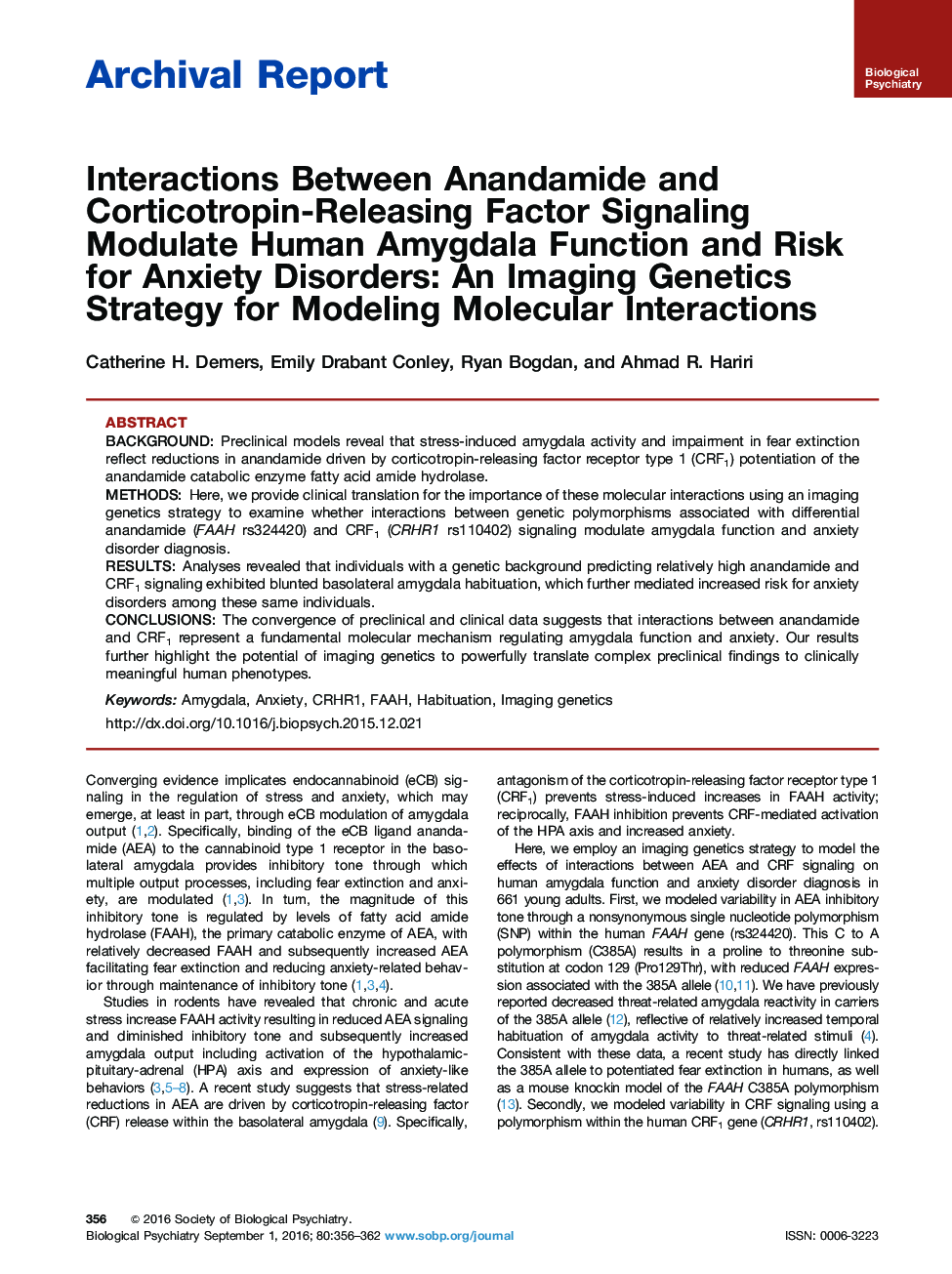| کد مقاله | کد نشریه | سال انتشار | مقاله انگلیسی | نسخه تمام متن |
|---|---|---|---|---|
| 6226341 | 1276378 | 2016 | 7 صفحه PDF | دانلود رایگان |
BackgroundPreclinical models reveal that stress-induced amygdala activity and impairment in fear extinction reflect reductions in anandamide driven by corticotropin-releasing factor receptor type 1 (CRF1) potentiation of the anandamide catabolic enzyme fatty acid amide hydrolase.MethodsHere, we provide clinical translation for the importance of these molecular interactions using an imaging genetics strategy to examine whether interactions between genetic polymorphisms associated with differential anandamide (FAAH rs324420) and CRF1 (CRHR1 rs110402) signaling modulate amygdala function and anxiety disorder diagnosis.ResultsAnalyses revealed that individuals with a genetic background predicting relatively high anandamide and CRF1 signaling exhibited blunted basolateral amygdala habituation, which further mediated increased risk for anxiety disorders among these same individuals.ConclusionsThe convergence of preclinical and clinical data suggests that interactions between anandamide and CRF1 represent a fundamental molecular mechanism regulating amygdala function and anxiety. Our results further highlight the potential of imaging genetics to powerfully translate complex preclinical findings to clinically meaningful human phenotypes.
Journal: Biological Psychiatry - Volume 80, Issue 5, 1 September 2016, Pages 356-362
